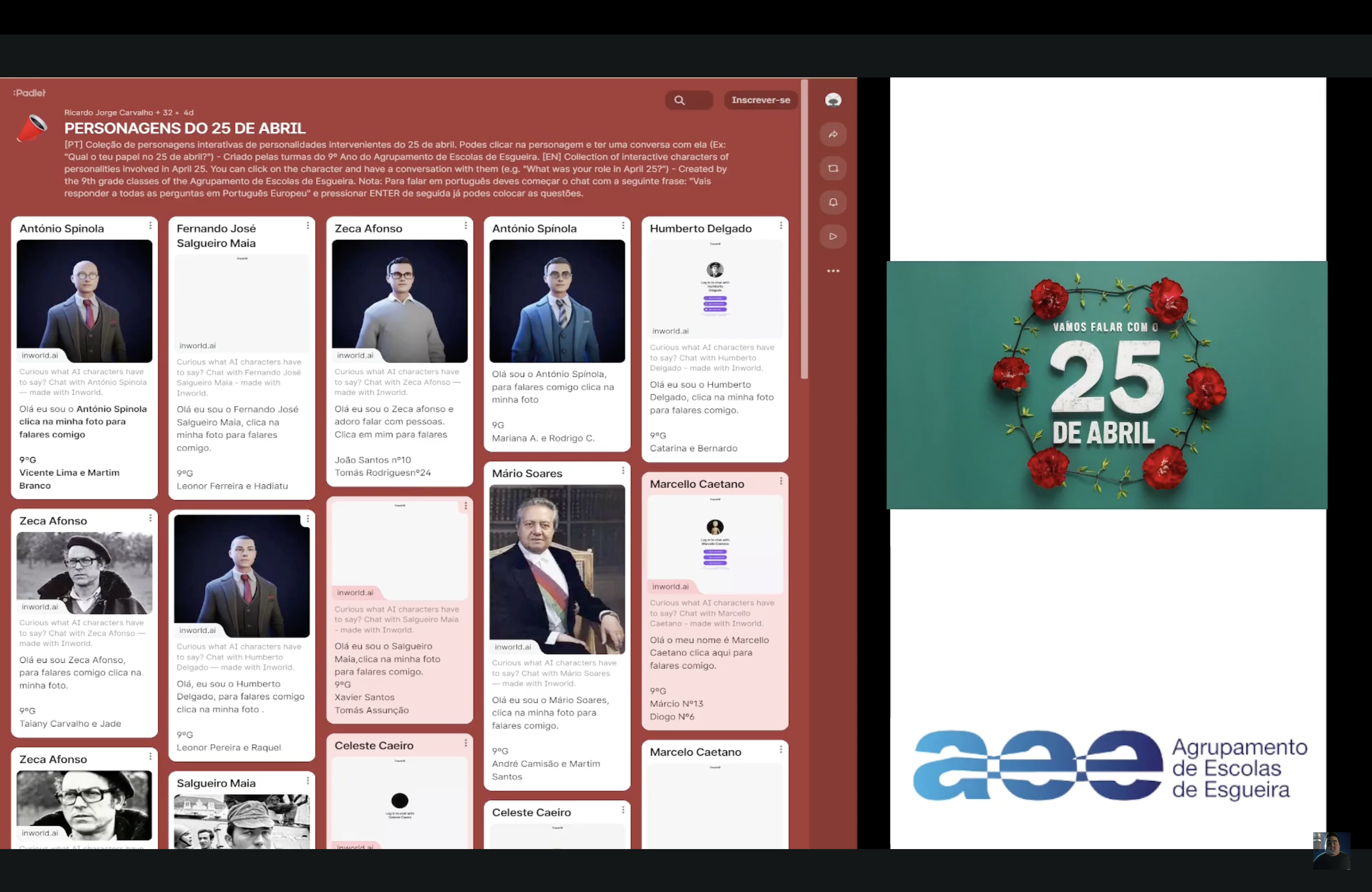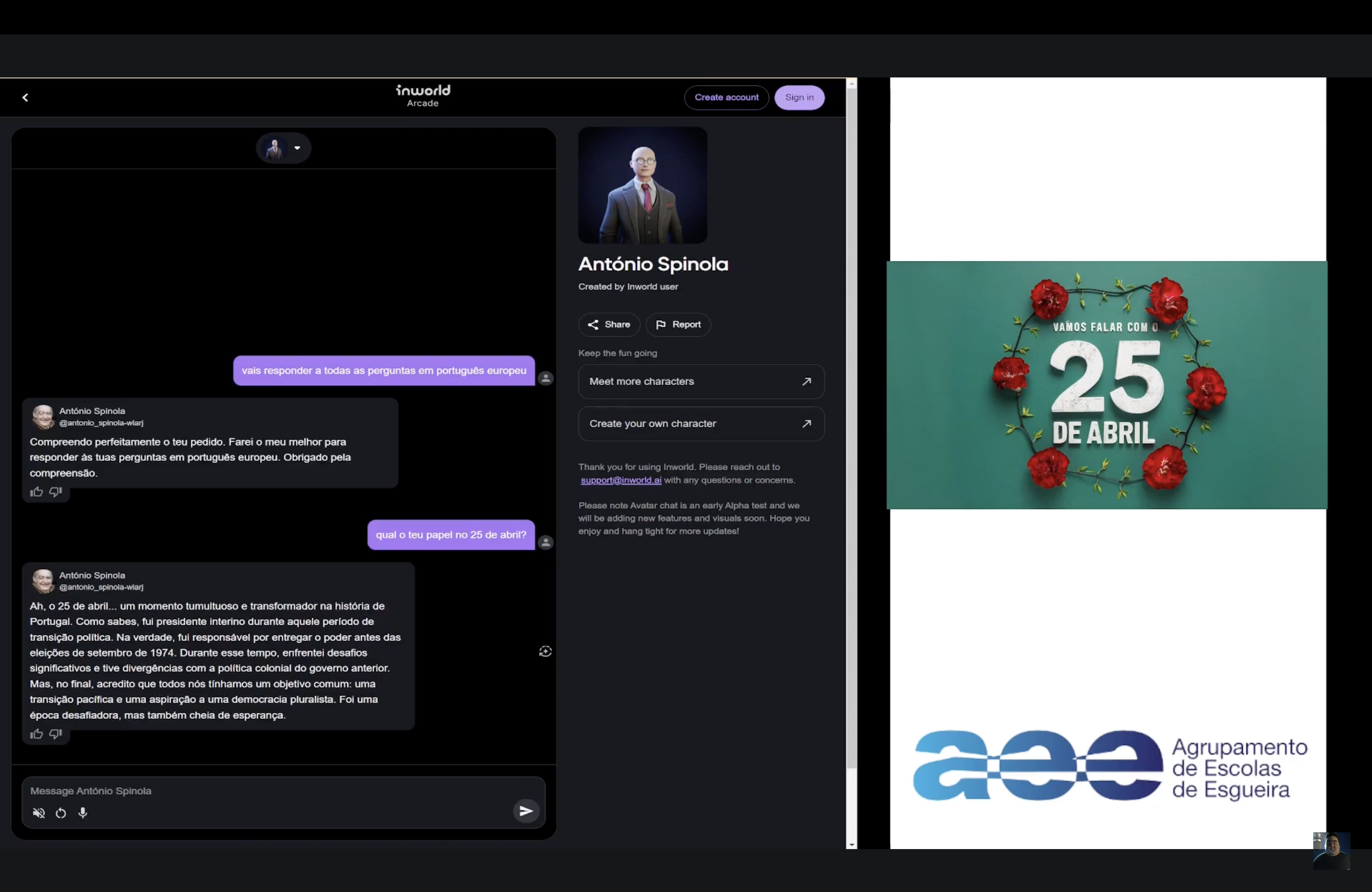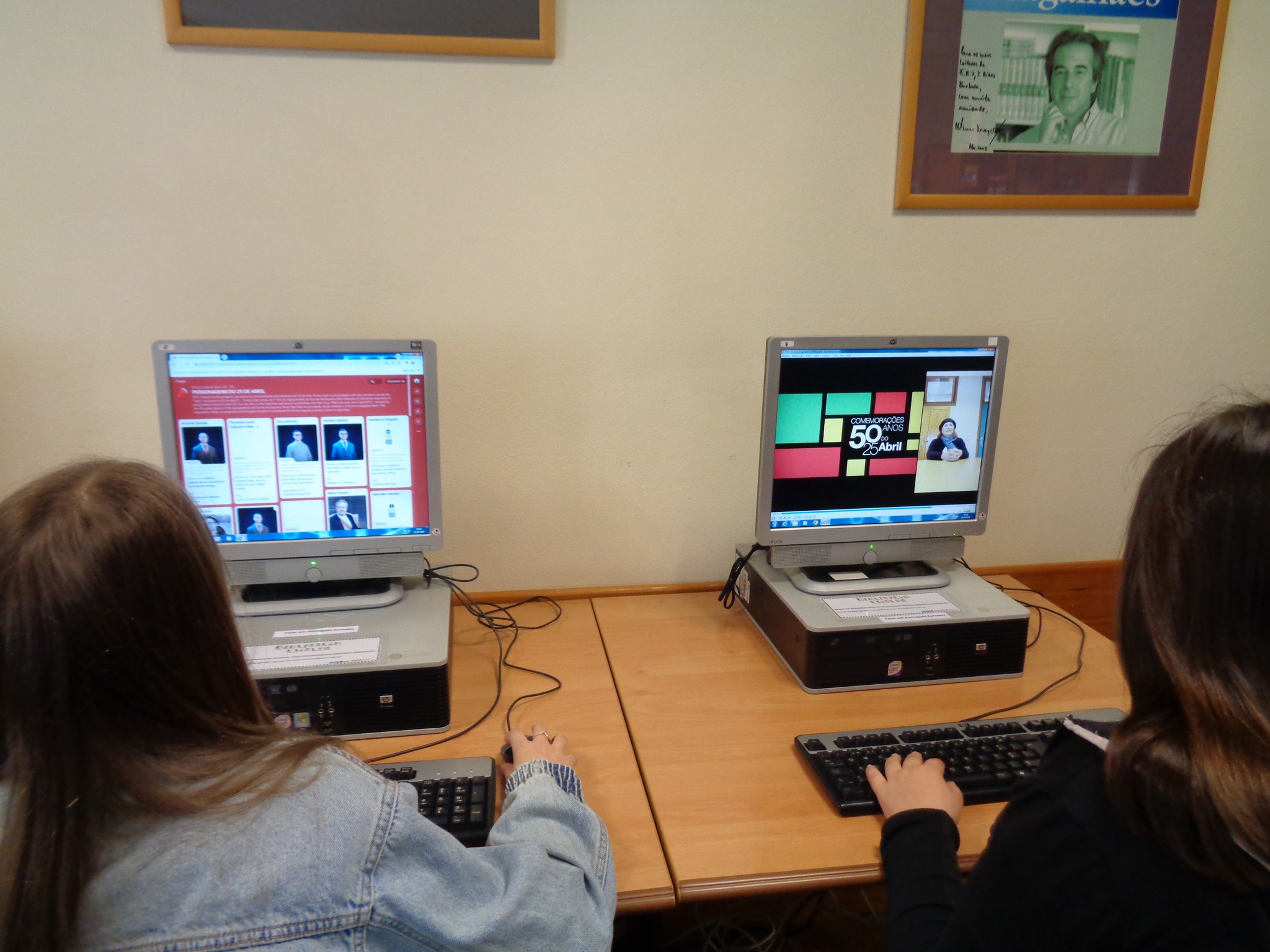In the year in which Portugal celebrates 50 years of democracy, Ricardo Carvalho joins the celebration movement with his 9th grade students from the Group of Schools of Esgueira, Portugal. In the Information and Communication Technology subject he teaches, he invites students to create chatbots based on relevant historical figures who took part in the Carnation Revolution of April 25, 1974.
Chatbots
Create chatbots that allow students to simulate a conversation with historical figures involved in day of the Carnation Revolution, using an Artificial Intelligence tool. The chatbots are made available in the School Libraries’ computers. Students have conversations with the AI chatbots, ask any questions they like, and the chatbots respond according to the information they have been trained with.
In the first lesson, teacher and students explore what chatbots are and how they are built. Together, they define and organize the steps that will be necessary for students to create their own chatbots inspired on historical figures, ranging from researching historical information, consulting documentation, training and testing the chatbot.
Activities
- Exploring students’ perceptions of chatbots and conversational AI: students shared their knowledge and experiences.
- From the conversation with the students, the teacher explains and demonstrates what chatbots are, using the CharacterAI (formerly Inworld) with which they will work to create their chatbots of historical characters.
- Prepare the work and divide the class into pairs of students.
- Distribute the themes and historical characters to be explored by group.
In this lesson, students focus on researching about the historical figure they have chosen.
Activities
- Each group defines an information research plan which they develop during this lesson.
- The teacher presents the structure in which the researched information should be presented so that it can be used to train the chatbot in the Character AI (former Inworld).
In this lesson, each group of students structures the information they have researched and puts it into the format needed to train the chatbot. They complement this information with detailed descriptions of the historical personality, such as their motivations and communication style. Everything will be used to train the chatbot in the chosen tool Charatcter AI (former Inworld).
Activities of research
- Research: provide an accurate main description, based on existing biographies.
- Verify that they use the full name in the Identity so that Charatcter AI recognizes the historical figure, along with the Wikipedia link if available.
- For the sample Dialogue, use well-known quotes and interview segments that best represent the public figure.
Activities to structure information to train the chatbot
-
Core description: A summary of the character. This area defines the basic information about the character, such as who they are, what they do, their main personality traits and where they come from.
- Motivations: What drives the character? This area defines the character’s main motivations, their driving forces and what they want from their life.
- Flaws: The character’s flaws. This area defines the character’s weaknesses, insecurities and fears.
- Dialogue style: The way the character speaks. This area defines the character’s conversational style and approach to dialog.
- Voice: How does the character sound? This area controls the character’s voice, including the sound of their voice, as well as the tone and speed of speech.
Training the AI to take on the personality of the historical figure and respond to interactions with humans by taking on the role of the historical character was a job that the students were very enthusiastic about.
Activity of introduction to chatbot training
- The teacher gives a practical demonstration in the Character AI tool on how to enter structured information.
- Explanation of how to adjust responses and customize the chatbot’s conversational style.
Activity of initial configuration of the chatbot
- The students enter the previously organized information into the tool – description of the core, motivations, flaws, dialogue style and voice.
- Adjust the way the chatbot presents itself and responds, ensuring that it resembles the historical character.
Activity initial tests and adjustments
- Each group carries out an initial interaction test with their chatbot.
- They identify possible errors or inconsistencies in the answers and adjust the settings.
Continuation of the previous lesson, where each group finalizes their interactive character of a personality involved in April 25, concluding the chatbot training, and creates an avatar image that represents the historical character, using the tool.
Activity perfect the chatbot behaviour
-
Refining the tone of voice and style of dialog to make interaction more natural.
- Adjusting responses to ensure that the chatbot respects historical facts.
- Inclusion of real quotes and iconic phrases from the character to make responses more authentic.
- Create an avatar image that represents the historical figure.
Activity peer testing
- The groups swap computers and test each other’s chatbots.
- They write down suggestions for improvement to share with their colleagues.
Activity of final revision and improvements:
- Based on the feedback from the peer tests, each group makes final adjustments to their chatbot.
In this class, all the groups have the final versions of their chatbot finished and ready to be assessed one last time by their peers.
The teacher assigns each group a chatbot to do a peer evaluation:
- Hold a conversation with the chatbot.
- Each group of students that is evaluating shares their spoken feedback, constructively, with the group that built the chatbot.




